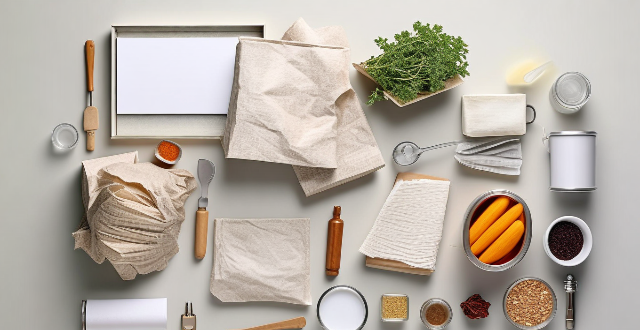The most common materials used in food packaging include plastic, paper and cardboard, metal, and glass. Each material has its advantages and disadvantages, such as plastic being flexible and durable but not biodegradable, while paper and cardboard are eco-friendly but not suitable for wet or oily foods. Metal provides high barrier protection against light, oxygen, and moisture, while glass is transparent and non-porous but heavy and brittle. The choice of material depends on the type of food product, cost, and environmental impact.

The Most Common Materials Used in Food Packaging
Food packaging is an essential aspect of the food industry, as it helps to preserve the quality and safety of food products. There are several materials used in food packaging, each with its own advantages and disadvantages. In this article, we will discuss the most common materials used in food packaging.
Plastic
Plastic is one of the most widely used materials in food packaging due to its flexibility, durability, and low cost. It can be molded into various shapes and sizes, making it ideal for packaging a wide range of food products. However, plastic is not biodegradable and can take hundreds of years to decompose, which raises environmental concerns.
Types of Plastic Used in Food Packaging:
- Polyethylene Terephthalate (PET): Often used for beverage bottles and jars.
- High-Density Polyethylene (HDPE): Commonly used for milk jugs and detergent bottles.
- Low-Density Polyethylene (LDPE): Used for plastic bags and film wraps.
- Polyvinyl Chloride (PVC): Used for cling films and rigid food packaging.
- Polypropylene (PP): Used for yogurt containers and microwaveable food trays.
Paper and Cardboard
Paper and cardboard are eco-friendly alternatives to plastic, as they are biodegradable and recyclable. They are commonly used for packaging dry goods such as cereals, pasta, and baked goods. However, paper and cardboard are not suitable for packaging wet or oily foods, as they can absorb moisture and become soggy.
Types of Paper and Cardboard Used in Food Packaging:
- Kraft Paper: A strong and durable paper often used for shipping boxes and bags.
- Corrugated Cardboard: Consists of two layers of paper with a fluted layer between them, providing excellent protection for fragile items.
- Sulfite Paper: A type of paper that has been treated with sulfites to make it more resistant to moisture and grease.
Metal
Metal packaging, primarily aluminum and tinplate, is used for products that require high barrier protection against light, oxygen, and moisture. Metal cans are commonly used for beverages, while tinplate is used for canned foods such as fruits, vegetables, and meats.
Types of Metal Used in Food Packaging:
- Aluminum: Lightweight and easy to shape, making it ideal for beverage cans and foil wrapping.
- Tinplate: A steel sheet coated with a thin layer of tin, used for making cans for preserved foods.
Glass
Glass is an excellent material for food packaging due to its transparency, allowing consumers to see the product inside. It is also non-porous, preventing contamination from external sources. However, glass is heavy and brittle, making it less suitable for transportation and handling compared to other materials.
Types of Glass Used in Food Packaging:
- Soda Lime Glass: The most common type of glass used in food packaging, made from readily available materials.
- Borosilicate Glass: More resistant to thermal shock than soda lime glass, making it ideal for oven-safe dishes and cookware.
Conclusion
In conclusion, the choice of material for food packaging depends on several factors, including the type of food product, cost, and environmental impact. By understanding the properties and applications of each material, manufacturers can make informed decisions about which materials to use for their food packaging needs.